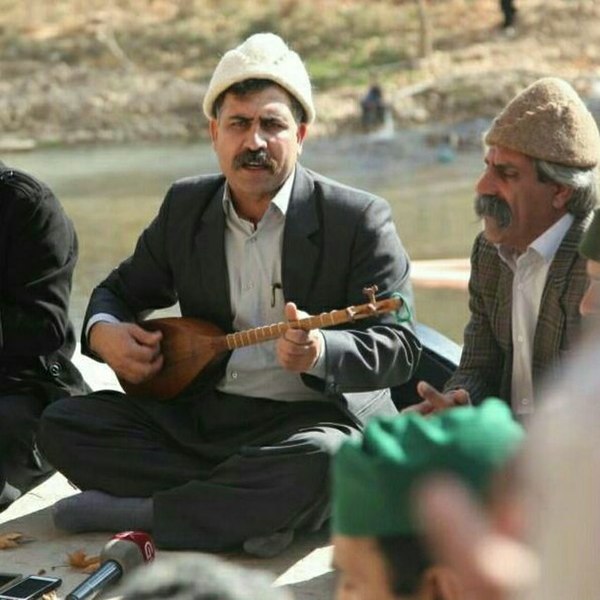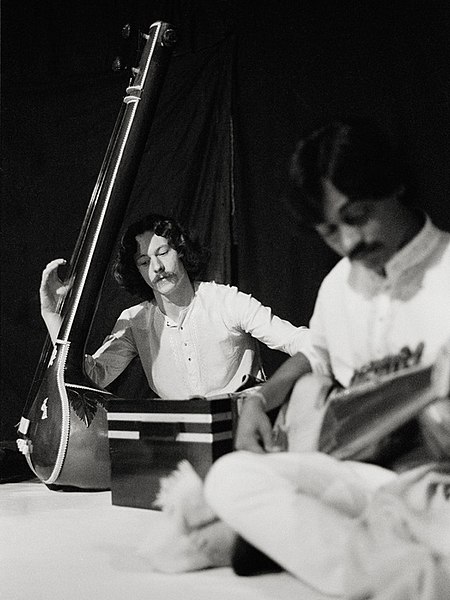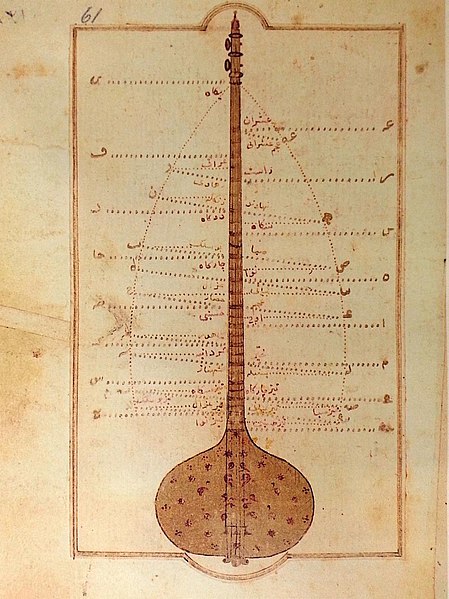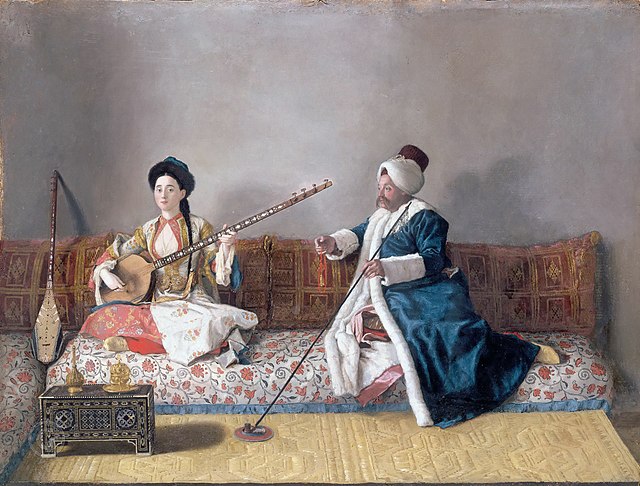The term Tanbur can refer to various long-necked string instruments originating in Mesopotamia, Southern or Central Asia. According to the New Grove Dictionary of Music and Musicians, "terminology presents a complicated situation. Nowadays the term tanbur is applied to a variety of distinct and related long-necked lutes used in art and folk traditions. Similar or identical instruments are also known by other terms." These instruments are used in the traditional music of Iran, India, Kurdistan, Armenia, Afghanistan, Azerbaijan, Pakistan, Turkey, Tajikistan, Kazakhstan, and Uzbekistan.
Man playing a tanbur-family instrument
Kurdish Tembur
left to right: Turkish tambur, Greek Baglamas, tambouras
North Indian Tanpura (left) used as a drone to accompany a sarod recital
The tambur is a fretted string instrument of Turkey and the former lands of the Ottoman Empire. There are two variants, one of which is played with a plectrum and the other with a bow. The player is called a tamburî.
Turkish tambur on the left
1700-1703. Tanbûr from the book Kitâb-i ‘Ilmü’l Mûsîkî ala Vechi’l-Hurûfat by Dimitrie Cantemir
1740, painter Jean-Étienne Liotard. Europeans dressed up in traditional "Tartar" costume.
1880. Painting by Osman Hamdi Bey







